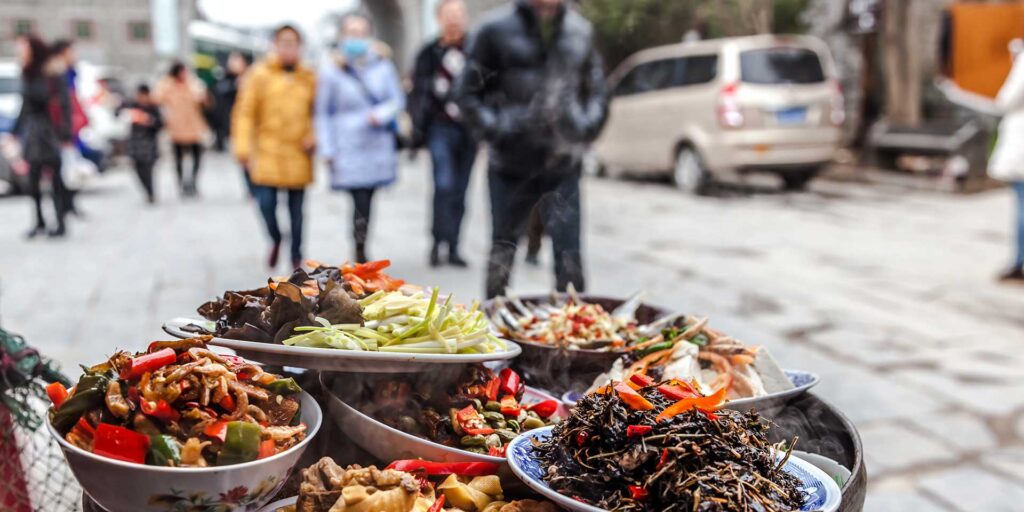Southeast Asia is a paradise for food lovers. From smoky street‑grills to fragrant spice stalls, the region’s markets offer rich cultural immersion and unforgettable flavors. If you’re planning a trip, exploring local food markets must be high on your list. Not only do they serve up delicious eats, they also give insight into daily life, traditions, and regional diversity. Below are some of the best local food markets across Southeast Asia—markets that combine authenticity, variety, atmosphere, and affordability.
Top Markets You Shouldn’t Miss
| Market | Location | What Makes It Special | Signature Dishes / Foods |
|---|---|---|---|
| Ben Thanh Market | Ho Chi Minh City, Vietnam | Iconic, historic; central location; stalls inside & around outer perimeter | Pho, banh xeo (Vietnamese pancakes), fresh fruit smoothies |
| Chatuchak Weekend Market | Bangkok, Thailand | Massive size; mix of food, crafts, clothes; weekend only | Coconut ice cream, grilled meats, papaya salad |
| Jalan Alor Food Street | Kuala Lumpur, Malaysia | Evening street‑food alley; vibrant night scene; wide range of Malay/Chinese/Indian food | Satay, chili pan mee, char kway teow |
| Luang Prabang Night Market | Luang Prabang, Laos | Scenic riverside town; friendly vendors; artisan crafts alongside food | Khao nom kok (coconut cakes), spring rolls, sticky rice treats |
| Amphawa Floating Market | Near Bangkok, Thailand | Market on water; unique ambience; vendors on boats | Grilled river fish, coconut sweets, boat noodles |
| Hoi An Night Market | Hoi An, Vietnam | Lanterns, riverside walks, very photogenic; good mix of locals & tourists | Cao lầu noodles, white rose dumplings, banh mi |
| Tekka Centre | Singapore | Multi‑ethnic; wet market + hawker food; great indoors (air‑conditioned) | Indian biryani & curries, Malay nasi lemak, Chinese rice & noodle dishes |
What to Expect & Tips for Visiting
- Timing: Many night markets open around dusk (5‑6 pm) and run until late. Day markets (or wet markets) are best visited early in the morning for fresher ingredients and cooler temperatures.
- Cash is King: Bring local cash; small vendors often don’t accept cards.
- Hygiene: Choose stalls with visible good hygiene—cooked food, covered containers, clean utensils.
- Temperatures & Weather: Southeast Asia is hot and humid. Stay hydrated and dress light; if visiting floating or open‑air markets, rain gear can be useful.
- Bargaining: For crafts and souvenirs around the food stalls, polite bargaining is often okay. But food prices are usually fixed or minimally negotiable.
How to Plan Your Market‑Based Food Tour
- Start with iconic markets first (like Ben Thanh, Chatuchak) to get a baseline of local cuisine.
- Go off the beaten track if you can; smaller neighborhood markets often offer more authentic snacks and less tourist markup.
- Mix day and night markets to experience both fresh produce markets and food‑street atmospheres.
- Pair market visits with walking tours to discover hidden alleys or local specialities.
Bonus Tip: Energy Management & Travel Health
Long journeys between countries in Southeast Asia, or arriving after transits, can leave you drained. To enjoy local food markets fully, you’ll want to be in good form. That brings in How to Survive Long‑Haul Flights with Minimal Jet Lag into relevance:
- Try to schedule your arrival during daylight. Expose yourself to natural light once you land.
- Stay hydrated during flights; avoid excessive alcohol.
- Adjust your sleeping schedule a little before travel to match the destination time zone.
- Rest well and take short naps, so by evening you’re ready to roam a night market with appetite and energy.
Sample 5‑Day Market Food Itinerary
Here’s a suggested itinerary to sample several market experiences in one trip:
- Day 1: Arrive in Bangkok, rest. Evening: visit Chatuchak Weekend Market (if weekend) or Jalan Alor Food Street.
- Day 2: Morning wet market, afternoon rest. Evening: Talad Rot Fai Train Market or similar vintage night markets.
- Day 3: Travel to Vietnam. In Ho Chi Minh City, explore Ben Thanh Market and its surrounding food alleys.
- Day 4: Head to Hoi An. Evening: Hoi An Night Market.
- Day 5: Wrap up in Singapore with breakfast at Tekka Centre and maybe a hawker centre lunch.
FAQs
What’s the best time of year to visit these food markets?
The dry season (roughly November to March in many Southeast Asian countries) tends to offer cooler temperatures and less rain, making market walks more pleasant.
Are these markets safe for travellers?
Yes. Most markets are safe. Carry minimal valuables, stay aware of your surroundings, and be cautious with street‑food hygiene. If in doubt, follow locals or choose popular stalls.
Can I try vegetarian or dietary‑restricted dishes?
Definitely. Many markets have stalls offering vegetarian, vegan, or gluten‑light options. In places like Thailand and Vietnam, tofu, noodle soups, and fresh fruit are common. Always ask what ingredients are used.
How much should I budget?
It depends on where you’re going. In many markets meals cost very little: in rural or less touristy areas you may eat well for $2‑5 USD. In major cities or tourist heavy markets, prices may be higher ($5‑10 USD) for more elaborate dishes.
Is it okay to eat from street‑food stalls as a first‑time visitor?
Yes—but choose wisely. Look for busy stalls (which indicates turnover), see how food is handled, and ensure cooked food is piping hot. A little risk comes with street food, but many travellers find it among the most rewarding parts of a trip.
Conclusion
If you love food, culture, and sensory adventure, Southeast Asia’s local food markets are among the best in the world. From bustling night stalls under lanterns to floating fish‑boats on rivers, every market has its own character and flavour. Planning well, staying healthy, and being adventurous will let you taste not only dishes, but the spirit of each place. When you get the balance right, the memories (and the meals) will stay with you far longer than any souvenir.







